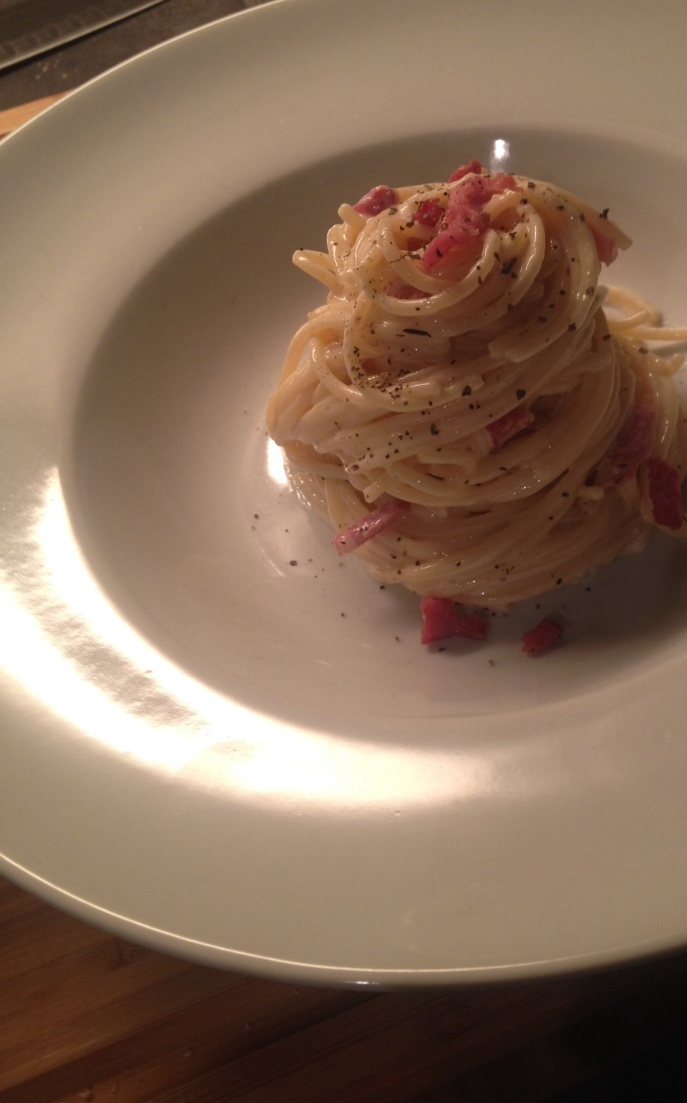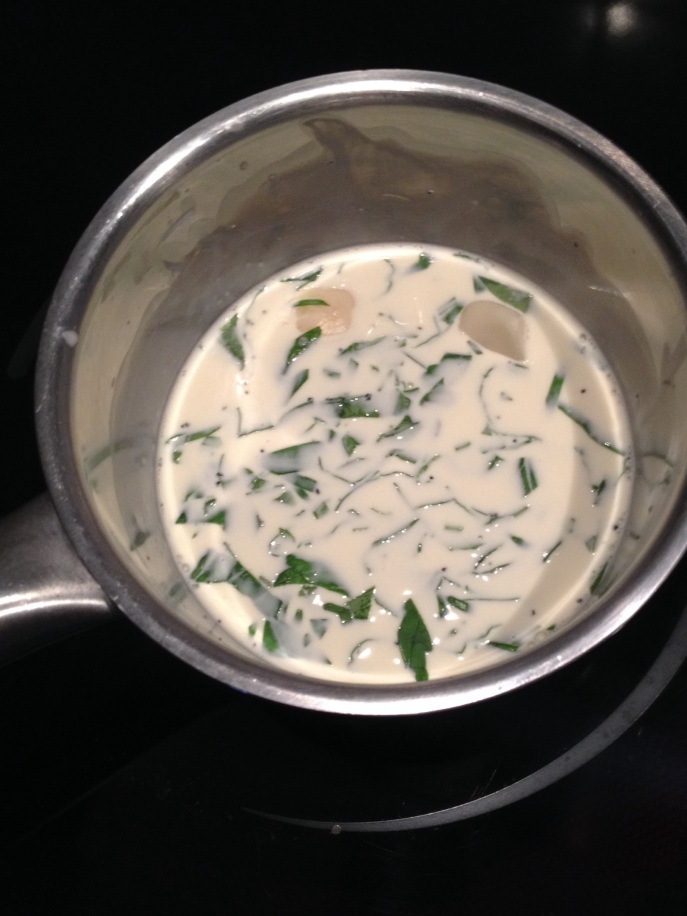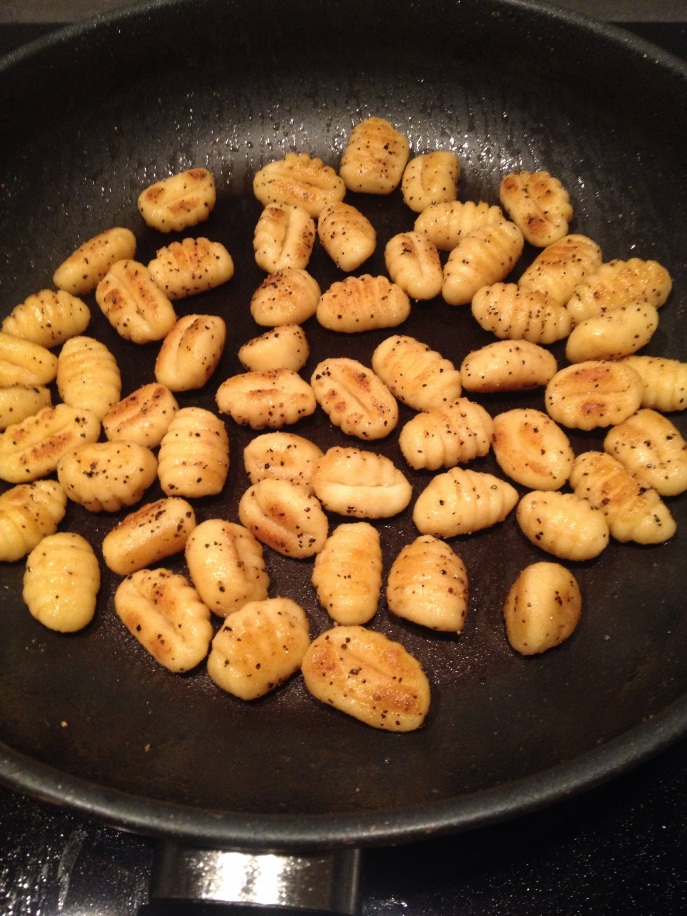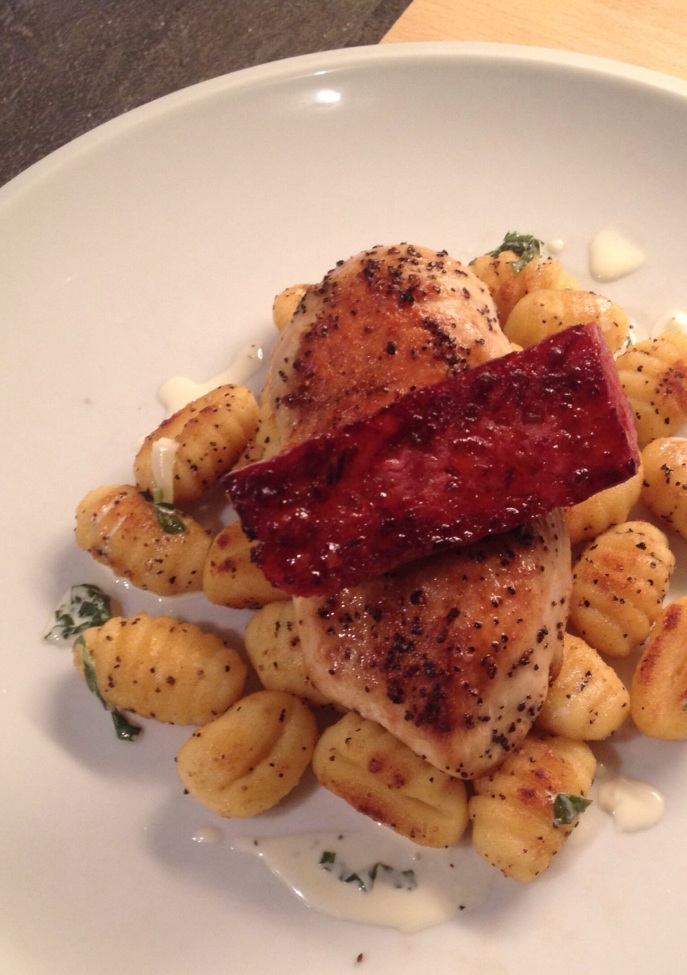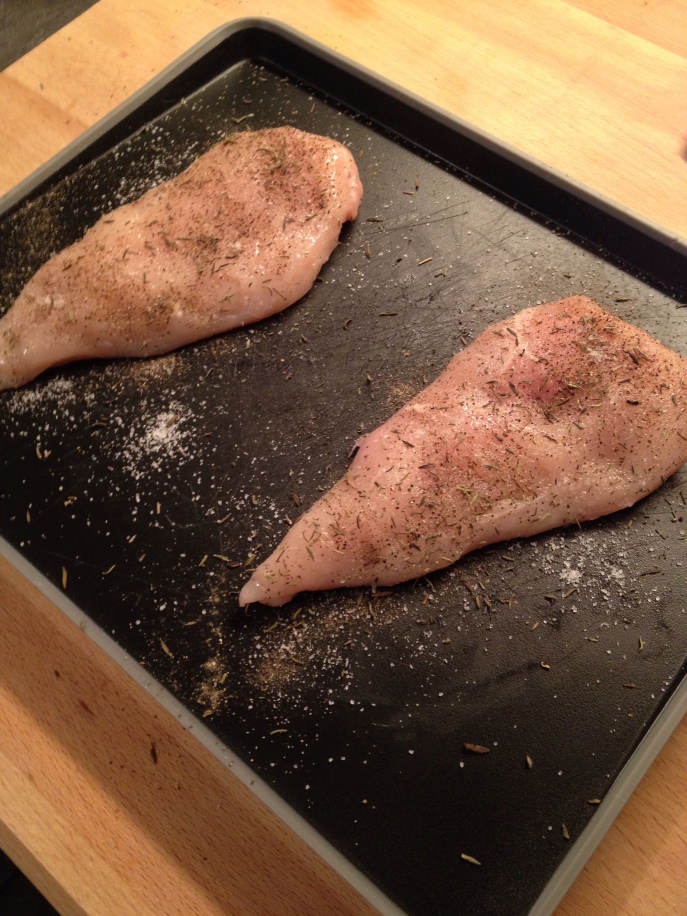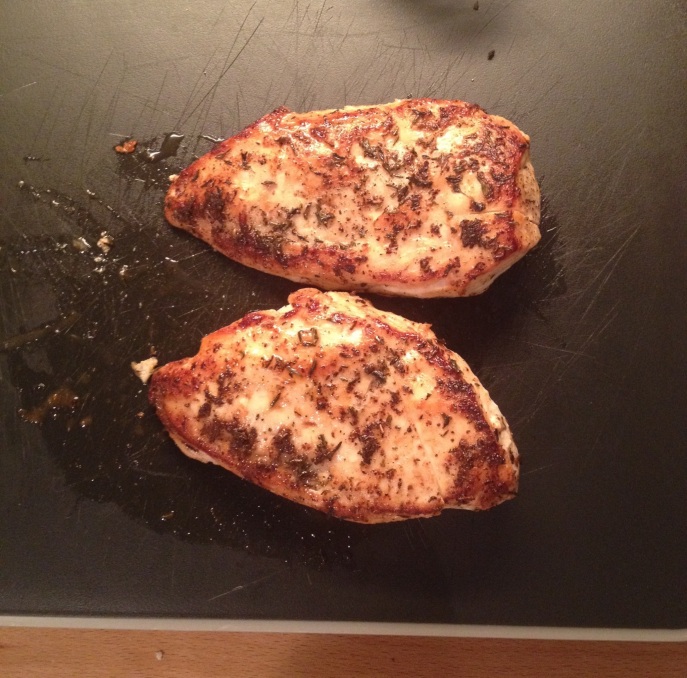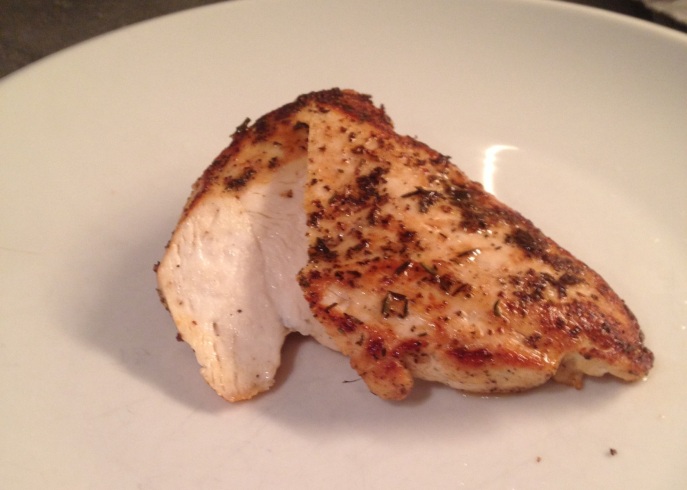This is a weekly staple in my household, my wife loves it. The dish is so quick and easy to make and if you don’t make your own pasta it takes seconds to prepare. It’s not a classic carbonara because it contains cream but there are classic techniques in the recipe. It’s an incredibly versatile dish that you can keep in your repertoire as a foolproof meal when unexpected guests arrive or you need a quick lunch.
Experiment with it by changing the lardons for smoked salmon, adding peas or even cooking shellfish in the cream infusing stage and scattering them around the pasta when plating up.
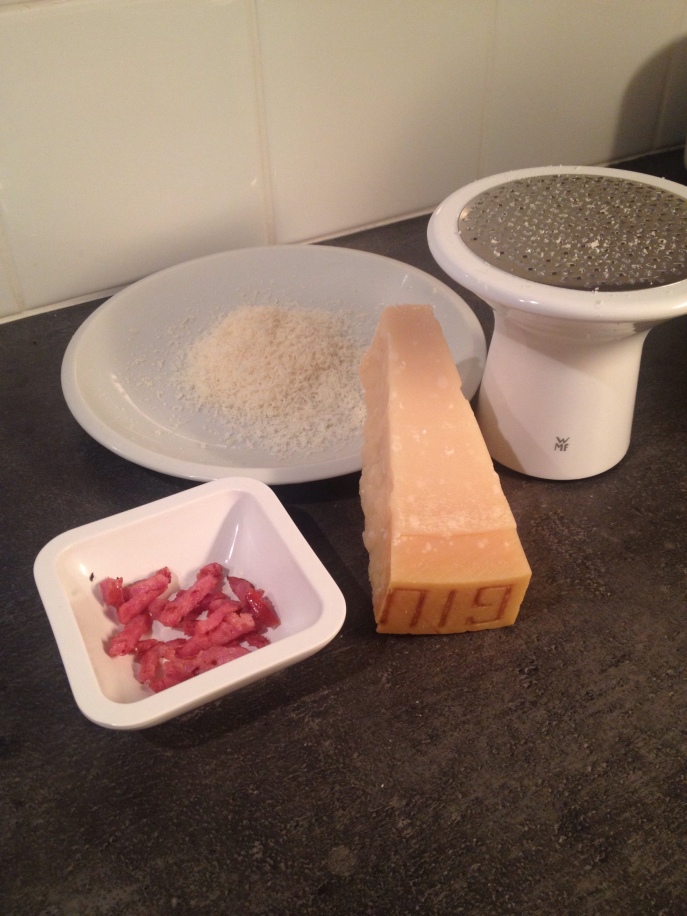
INGREDIENTS
fresh spaghetti or tagliatelle (enough for two)
1 large free range egg
60g lardons
2 garlic cloves peeled and bashed open with the flat of a knife
125ml half fat thick cream (this is very common in France but a single cream will do)
Salt and fresh ground black pepper to season
Dried or chopped fresh basil for garnish
30g of grated Parmigiano reggiano plus extra for garnish
Glug of extra virgin olive oil
Pinch of dried thyme
METHOD
Pour the cream into a sauce pan over a low medium heat and add the garlic, thyme and season well with salt and pepper. Heat through and once hot (not boiled), remove from the heat and pour into a bowl, set aside to cool and infuse.
Heat a frying pan over a high heat with a little oil. Toss the lardons in and seal them crisp on all sides. This should only take around 2 minutes, keep them moving all the time so they don’t stick or burn.
Once sealed remove from the heat and place on kitchen paper to drain excess fat.
When free of oil, transfer the majority of the lardons to the warm cream mixture and allow to cool for around 20 minutes, save a handful for the garnish.
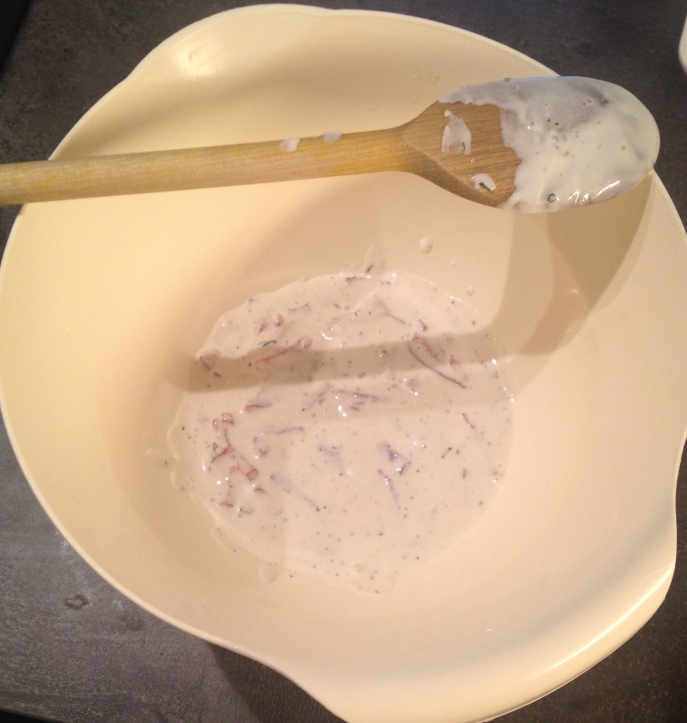
Next take your fresh pasta out of the fridge so it can return to room temperature, this will make it easier to separate prior to cooking, fresh pasta is soft and can stick together when cooking.
Once the cream and lardon mixture has cooled remove the 3 bashed cloves and discard them. Separate the pasta and drop it into boiling water with two generous pinches of salt and cook until al dente tasting it throughout the cooking process to ensure its perfect texture and bite.
Drain the pasta but don’t discard the salty cooking water, this is essential to the dishes glossy, saucy sheen. Set the pasta aside in a sieve above the salty cooking liquid.
With an open ended whisk, crack the egg the into the cream mixture and combine, making sure not to get too much air into the mixture.
Place the pasta into a fresh pan over a low medium heat and add the cream, egg and lardon mixture, stir vigorously so not to stick and make sure not to scramble the egg, if it gets too hot lift it off the heat and then return. After one minute add a ladle of the pasta cooking water and let the mixture reduce whilst continually stirring and folding the pasta over itself.
Once the liquid is reduced by half add the grated Parmesan and stir to combine. Check the seasoning and add fresh ground black pepper at this point.
Let the liquid reduce completely but don’t let it become too dry. It should be smooth and still visible as a sauce with all the pasta coated equally. If it does go a little dry you can ladle more of the pasta water in and begin reducing again.
When you have the correct consistency your ready to plate up. Dig a large pasta fork or long pronged fork into the center of the pasta and turn, let the pasta wrap around the fork and keep turning until you have a portion size your happy with. Get the ladle out of the pasta water and slide it under the fork to pick the pasta up, give it a few turns in the ladle to get a nice even shape and also to give it some height.
.
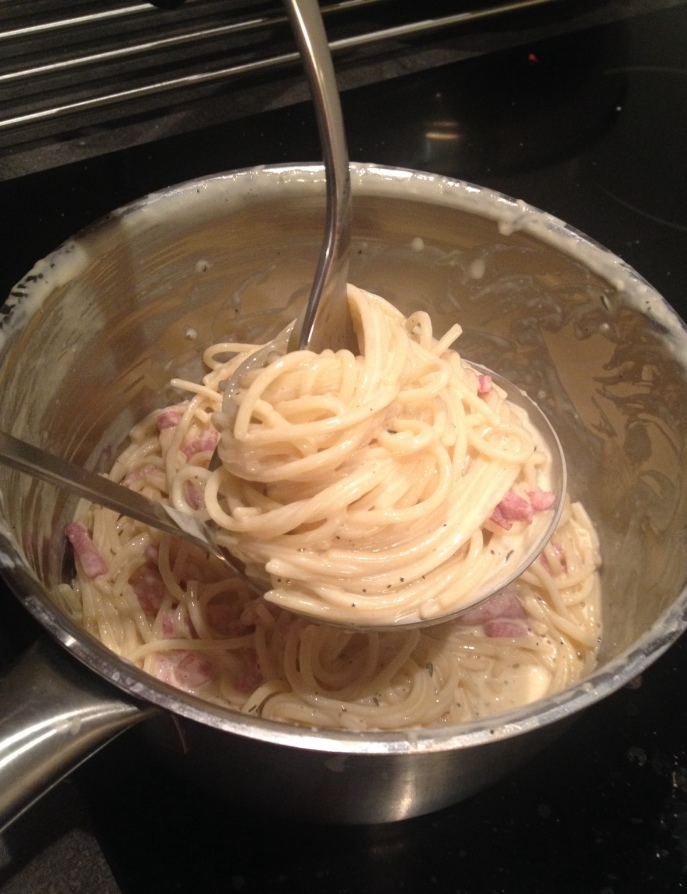
Keep the fork in the ladle and transfer the pasta from the pan to a warm deep pasta plate, slide the ladle out being careful to keep the height of the pasta.
Finish with grated Parmesan, basil and some of the lardons you kept from the sauce.
